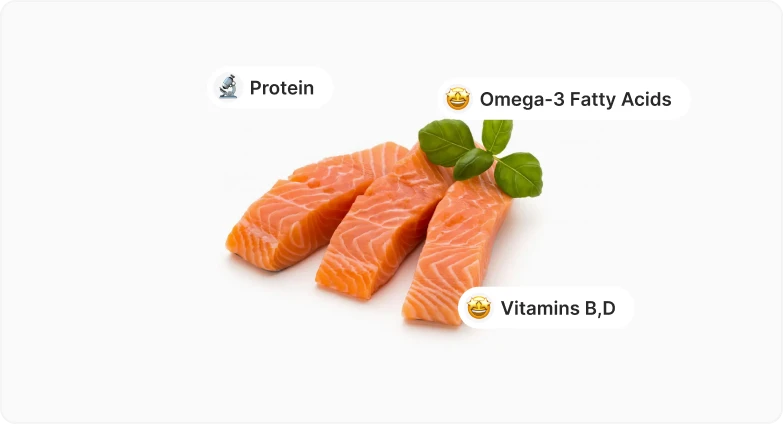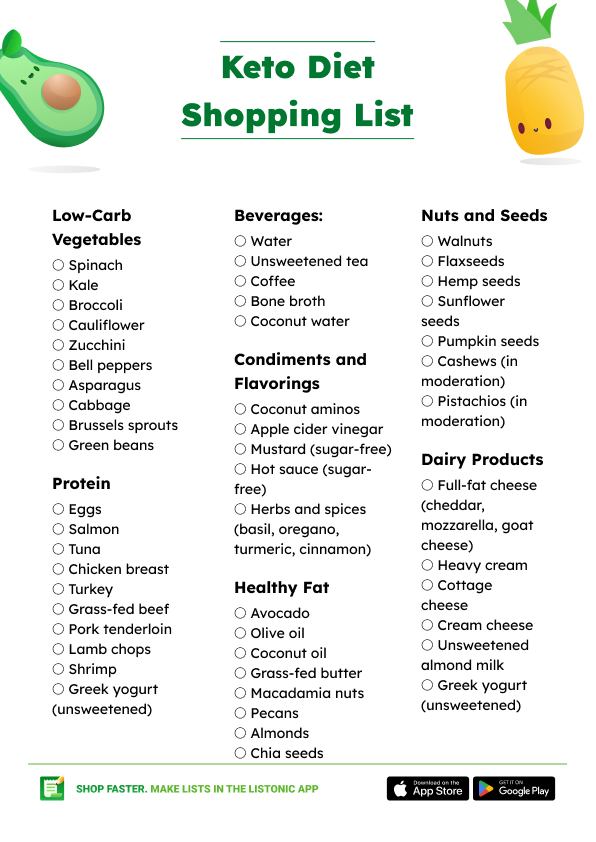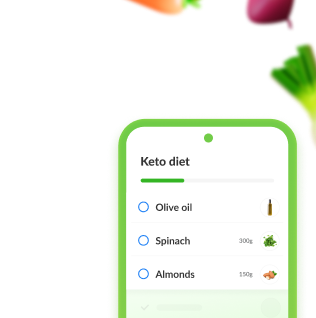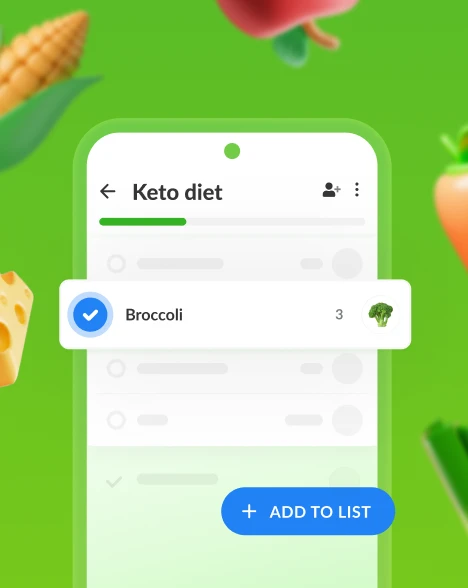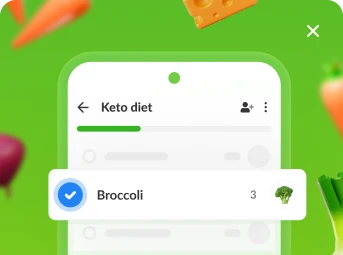Privacy Policy | Terms of services | Cookies Policy | © 2006-2024 Listonic. All rights reserved. Listonic Dev, and Listonic Ads are part of Listonic.

Keto Diet Food List (+ Shopping List and PDF)
July 13, 2023
It is not surprising why the Keto diet is becoming increasingly popular these days. It offers a unique approach to weight loss and improved well-being by emphasizing healthy fat consumption and reducing carbohydrates. In this article, we will delve into the fundamental principles of the diet, provide useful tips, highlight its health benefits, and even offer a handy grocery list to help kickstart your keto journey.
Table of contents
Keto Diet Shopping List
Keto Diet Guidelines
Keto Food List Breakdown
What Else to Keep in Mind?
Conclusions
Keto Diet Shopping List
Healthy Fat
Proteins
Low-Carb Vegetables
Dairy Products
Nuts and Seeds
Condiments and Flavorings
Beverages
Keto Diet Guidelines
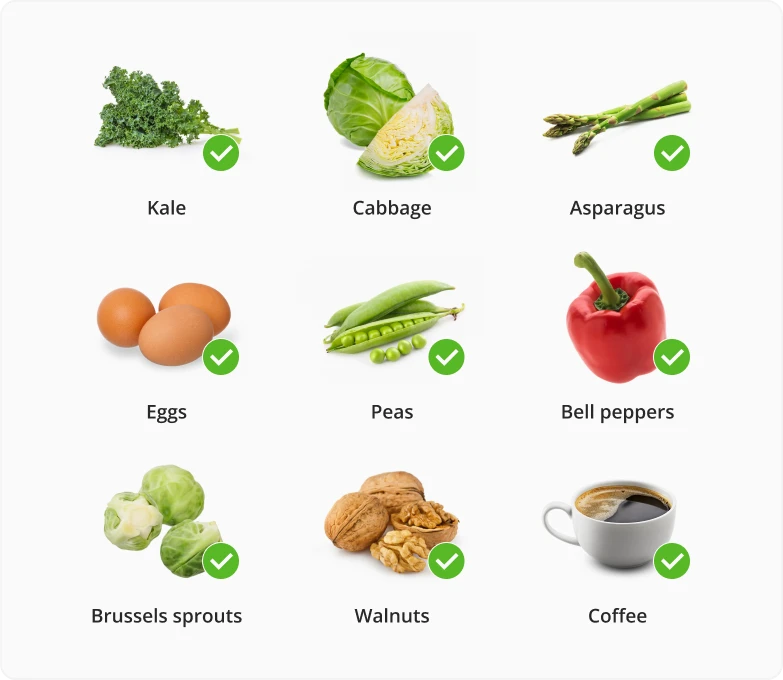
To ensure a successful and sustainable keto diet, follow these practical guidelines and tips:
- Limit your carbohydrate intake to 20-50 grams per day to enter a state of ketosis, where your body burns fat for fuel.
- Emphasize healthy fats like avocados, olive oil, and nuts, which provide sustained energy and support ketone production.
- Moderate your protein consumption with sources such as eggs, fish, and grass-fed meats to avoid interfering with ketosis.
- Load up on non-starchy vegetables rich in nutrients and fiber while keeping your carb intake low.
- Be mindful of hidden carbs in processed foods and track your daily intake to stay within your target range.
- Stay hydrated with water, plan and prepare your meals in advance to stay on track, and don’t be afraid to experiment with flavors.
Keto Food List Breakdown

Healthy Fats
Healthy fats are a crucial component of the keto diet as they provide a concentrated source of energy while keeping carbohydrate intake low. Avocado, olive oil, and coconut oil are rich in monounsaturated fats and promote satiety. Nuts and seeds like macadamias, pecans, and chia seeds offer a balance of healthy fats, fiber, and essential nutrients.
Low-Carb Vegetables
Non-starchy vegetables are a great way to add fiber, vitamins, and minerals to your keto meals without significantly increasing carb intake. Spinach, kale, and broccoli are low in carbs and high in nutrients. Cauliflower and zucchini can be used as versatile substitutes for higher-carb foods like rice and pasta.
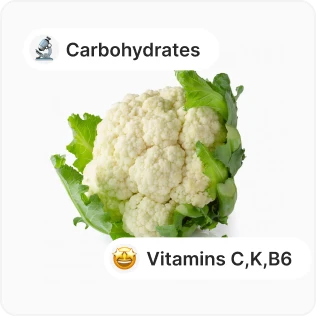
Proteins
Protein plays a vital role in the keto diet as it helps maintain muscle mass and keeps you feeling full. Eggs, salmon, and chicken breast are excellent sources of high-quality protein. Including grass-fed beef, pork, and shrimp in your meals provides essential amino acids without the added carbohydrates.
Dairy Products
Full-fat dairy products are a good source of healthy fats and provide essential nutrients like calcium. Cheese, heavy cream, and Greek yogurt (unsweetened) can be incorporated into keto recipes for added flavor and richness. However, it’s important to moderate dairy intake if you’re sensitive to lactose or aiming for a lower-calorie approach.
Nuts and Seeds
Nuts and seeds are nutrient-dense and provide healthy fats, fiber, and protein. Walnuts, flaxseeds, and hemp seeds are particularly rich in omega-3 fatty acids, which have anti-inflammatory properties. While cashews and pistachios are higher in carbs compared to other nuts, they can still be enjoyed in moderation as long as they fit within your daily carb limit.
Condiments and Flavorings
Condiments and flavorings can enhance the taste of your keto meals without adding excessive carbs. Coconut aminos, apple cider vinegar, and sugar-free mustard are low-carb options that add flavor and depth to dishes. The generous use of herbs and spices can also improve the appeal of your meals and provide additional health benefits.
Beverages
Staying hydrated is crucial on the keto diet, and water should be your go-to choice. Unsweetened tea and black coffee are carb-free options that can be enjoyed, with the option to add heavy cream for extra richness. Bone broth is a nourishing option that provides electrolytes, and coconut water can be consumed in moderation for its natural hydration properties, but it should be accounted for within your daily carb allowance.
Get a Low Carb Diet Grocery List on Your Phone!
Add & remove items
Sort items by store aisles
Share the list with your partner

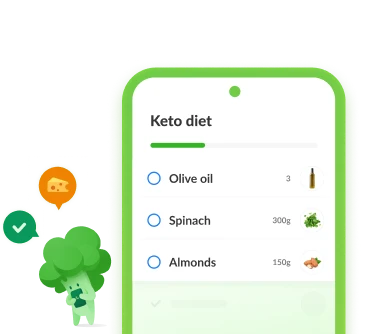
What Else to Keep in Mind?
What Foods to Avoid?
On a keto diet, it's important to avoid or minimize consumption of foods that are high in carbohydrates. Here are some foods to avoid:
Grains and Grain Products: This includes wheat, rice, oats, barley, corn, and products made from them such as bread, pasta, cereal, and tortillas.
Sugar and Sweetened Foods: Stay away from sugary treats, desserts, candies, soda, fruit juices, and sweetened sauces or dressings.
Starchy Vegetables: Limit or avoid high-carb vegetables like potatoes, sweet potatoes, carrots, and peas.
High-Sugar Fruits: While fruits are generally healthy, some fruits like bananas, grapes, and tropical fruits are high in sugars and should be consumed in moderation or avoided.
Sugary Condiments: Avoid condiments like ketchup, BBQ sauce, and sweetened salad dressings that contain added sugars.
Processed and Refined Foods: Stay away from processed snacks, packaged foods, and refined oils, as they often contain hidden sugars and unhealthy fats.
Alcohol: Alcoholic beverages are generally high in carbs, so it's best to limit or avoid them on a strict keto diet. If consumed, choose lower-carb options like dry wines or spirits without added sugars.
Keto-friendly Breakfast Ideas
When starting a new diet, it can often be challenging to come up with meal ideas. That's why we're here to help! We have curated a collection of breakfast inspirations to make your keto diet journey both satisfying and enjoyable.
Avocado and Bacon Egg Cups: Imagine biting into crispy bacon cups filled with creamy avocado and a perfectly cooked egg. It's a mouthwatering combination that will kickstart your day with delight!
Smoked Salmon and Cream Cheese Roll-Ups: Take thin slices of smoked salmon and wrap them around a luscious cream cheese filling. The result is a savory and satisfying breakfast treat that will leave you wanting more.
Spinach and Mushroom Omelet: Whip up fluffy eggs and fold them around sautéed spinach and mushrooms. This nutritious and flavorful omelet is the perfect way to fuel your morning and start your day right.
Coconut Chia Pudding with Berries: Picture a refreshing blend of creamy coconut milk and nutrient-packed chia seeds. Top it off with a colorful array of fresh, juicy berries for a sweet and satisfying keto-friendly breakfast option that will leave you feeling energized and ready to conquer the day.
What is “Keto Flu” and How to Cope with it?
The "keto flu" refers to a collection of symptoms that some individuals may experience during the initial stages of transitioning to a keto diet. It typically occurs within the first few days to weeks as the body adjusts to using ketones as its primary source of energy. Symptoms may include fatigue, headaches, brain fog, irritability, dizziness, nausea, and difficulty concentrating.
To cope with the keto flu and minimize its impact, consider the following strategies:
Stay Hydrated: Drink plenty of water to stay hydrated and support your body's electrolyte balance. Dehydration can exacerbate symptoms, so aim to consume an adequate amount of fluids throughout the day.
Increase Electrolyte Intake: The keto diet can cause a loss of electrolytes, including sodium, potassium, and magnesium. Replenish these electrolytes by adding salt to your meals, consuming potassium-rich foods like avocados and leafy greens, and considering magnesium supplements or foods like nuts and seeds.
Gradually Reduce Carbohydrates: Instead of abruptly cutting off carbohydrates, you may opt for a gradual reduction over a few days or weeks. This can help ease the transition and minimize the severity of symptoms.
Eat Adequate Healthy Fats: Ensure you're consuming enough healthy fats to provide a steady source of energy and support ketone production.
Include foods like avocados, olive oil, coconut oil, and nuts in your meals.
Allow Sufficient Rest: During the adaptation phase, your body may require extra rest and sleep. Listen to your body's signals and give yourself time to rest and recover.
Be Patient: Remember that the keto flu is temporary and typically subsides within a week or two as your body becomes more efficient at utilizing ketones for energy. Stay committed to the diet and trust that the symptoms will improve over time.
If symptoms persist or become severe, it's advisable to consult with a healthcare professional or registered dietitian. They can provide personalized guidance and support to help manage any challenges during the adaptation phase.
Conclusions
Now that you have a better understanding of the keto diet, you can begin your journey. Feel free to use a paper or digital version of our grocery list to make your keto shopping even easier!
